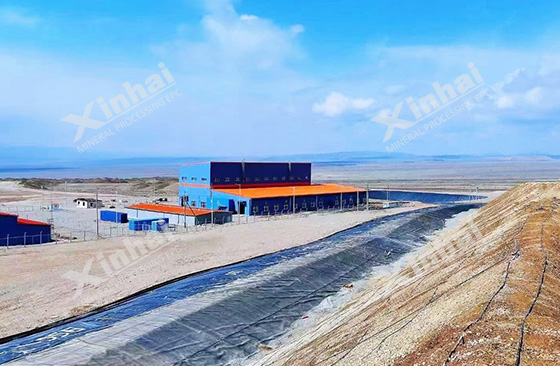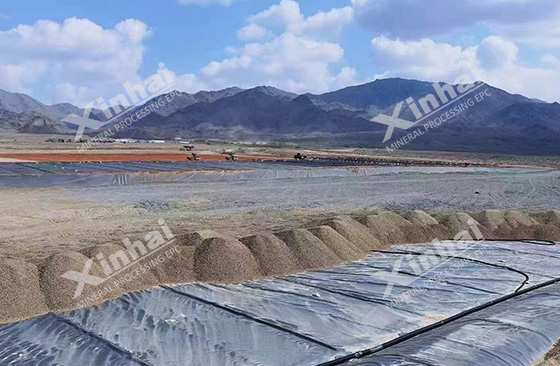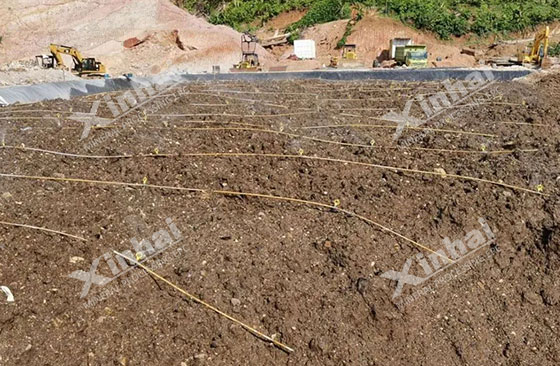
Heap leaching gold extraction technology is an effective gold ore beneficiation method, especially suitable for the extraction of low-grade gold ore. Compared with the traditional gold extraction process, heap leaching technology has the advantages of low cost, simple operation and strong adaptability. It mainly piles gold ore into a pile and uses leaching liquid to extract gold from it. Among them, the composition and performance of the leaching liquid cannot be ignored in the entire heap leaching process, which directly affects the dissolution efficiency and final recovery rate of gold. This article will introduce the influence of factors such as the selection of leaching agents, the concentration of cyanide and oxygen, and the pH value of the leaching liquid on the process effect in the heap leaching gold extraction process.

In the leaching process of gold ore, the selection of leaching agents is a crucial link.
1) The use of cyanide. As an effective leaching agent, cyanide can form gold complex ions with gold in the solution, thereby achieving effective transfer of gold. In the process of heap leaching of gold, different types of cyanide have different characteristics and effects. Common types of cyanide agents are sodium cyanide, potassium cyanide and calcium hydride. Among them, sodium cyanide has strong gold dissolving ability, good solution stability and low price, and is widely used in heap leaching production of gold mines. In addition, when sodium cyanide reaches the same solution concentration, its relative consumption is less, so in actual production, sodium cyanide is usually selected as the leaching agent for gold mines.
2) Use of protective alkali. Cyanide is prone to hydrolysis in solution and will be decomposed when it encounters acidic substances. Therefore, it is necessary to add an appropriate amount of alkali to the cyanide solution to maintain a certain alkalinity, which can greatly reduce the degree of hydrolysis of cyanide. The protective alkali can also neutralize the acid substances produced by carbon dioxide and sulfide ore oxidation and other reasons in the solution, which can reduce the chemical loss of cyanide and ensure the stability of the cyanide solution. Commonly used protective alkalis are lime and sodium hydroxide, among which sodium hydroxide is often used as a protective alkali in gold heap leaching production.

The cyanide concentration determines the speed of gold dissolution. After testing, it is known that when the cyanide concentration is lower than 0.05%, the gold dissolution rate will increase rapidly with the increase of cyanide concentration in the solution. However, as the cyanide concentration increases further, the increase in the gold dissolution rate will slow down. When the cyanide concentration rises to 0.15, the gold dissolution rate will reach the maximum value. If the concentration of cyanide reagent continues to increase, the gold dissolution rate will decrease instead of increase. Therefore, in the gold heap leaching production process, the cyanide concentration needs to be adjusted according to the ore composition and different stages of leaching, and controlled within a reasonable range.

The oxygen concentration in the heap leaching process will directly affect the dissolution rate of gold. Any factor that causes a decrease in oxygen concentration will reduce the dissolution rate of gold. In order to ensure the efficient dissolution rate of gold, it is necessary to ensure that the ore pile has good natural ventilation conditions. In addition, it is necessary to fully ventilate and oxygenate the leaching solution, or use mechanical ventilation if conditions permit, and strengthen the circulation of the leaching solution, so as to ensure that there is enough oxygen to participate in the heap leaching reaction at any time.

Ensuring the pH value of the leaching solution is a necessary condition for heap leaching. The pH value will directly affect the dissolution rate of gold. When the pH value is too high or too low, the dissolution rate of gold will be reduced. At the same time, too low pH value will weaken the protective effect of cyanide. Too high pH value will cause certain components in the ore to decompose and have an adverse effect on the dissolution of gold. Therefore, in the process of gold heap leaching, the alkalinity of the leaching solution needs to be carefully controlled. The pH value is controlled between 10-11 to ensure the smooth dissolution of gold.

In summary, the various parameters of the leaching solution in the heap leaching process have an important influence on the dissolution and recovery of gold. Selecting appropriate leaching agents, optimizing the concentrations of cyanide and oxygen, and reasonably controlling the pH value of the leaching solution can all help improve the gold dissolution efficiency and the overall effect of heap leaching. The coordinated control of these factors will provide strong support for improving the economic benefits and environmental protection effects of the heap leaching process.
To find out more about our products and solutions, please fill out the form below and one of our experts will get back to you shortly.